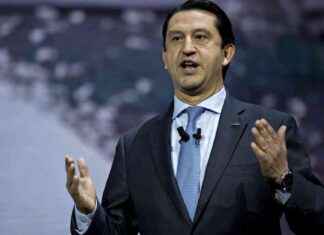The Ports of Los Angeles and Long Beach are looking at new opportunities to clean our air and protect our climate. It’s a historic opportunity and consistent with California’s long-standing leadership on environmental policy.
The new Clean Air Action Plan, or CAAP, put out by both ports, targets cleaning up dirty trucks — the single largest contributor to smog. But unfortunately, it doesn’t go far enough to actually deliver the cleanest trucks that can be on the road today.
Near-zero-emission heavy-duty natural gas vehicles exist today — delivering immediate clean-air benefits and transforming the ports’ diesel-dominated freight movement system. One truck engine manufacturer recently certified a new natural gas engine under the state’s new “Low NOx Standard” that reduces smog-forming emission by 90 percent, and provides the performance the trucking industry demands.
This is a game-changing option.
But the lack of urgent concern for communities most impacted — those living in the small cities along the trucking corridors that feed the ports and bear the brunt of the ports’ pollution — is a hole in the Clean Air Action Plan.
About 40 percent of the nation’s imports pass through the Ports of Los Angeles and Long Beach. According to the South Coast Air Quality Management District, the ports and all related activity from the goods-movement sector emit more than 40 percent of all smog-forming pollutants in Southern California. And the heavy-duty trucking sector is the single largest source contributing to smog — which often contributes to asthma and other breathing related problems.
The citizens of the port communities should not be paying high health costs so that low priced TVs can be trucked to the Midwest.
Study after study tells us that the residents in the neighborhoods near the ports and the transportation corridors have higher rates of asthma, cancer and other upper respiratory conditions. Just by breathing, millions of Southern California residents inhale unhealthy air that is making them sick. The Clean Air Action Plan must address this form of pollution now.
Both ports must demonstrate stronger leadership by calling for an accelerated transition to cleaner trucks available today. Replacing dirty diesel trucks with heavy-duty trucks that run on clean burning natural gas will improve our air immediately. When that happens, all of us will breathe more easily.
Los Angeles Mayor Eric Garcetti established the Sustainable Freight Advisory Committee to review the Action Plan and make recommendations on the plan. One of the committee’s strongest recommendations is to accelerate the move to clean heavy-duty truck technologies and lower carbon fuels.
We agree with Mayor Garcetti’s advisory committee. Swiftly adopting cleaner, near zero heavy-duty natural gas trucks is vital to our region’s health and it can be done today. Why wait? Let’s transition to cleaner trucks through this Clean Air Action Plan — not the next one.
George I. Minter is Southern California Gas Co. regional vice president of external affairs and environmental strategy, and a member of the Clean Trucks Now coalition.
Our editors found this article on this site using Google and regenerated it for our readers.





